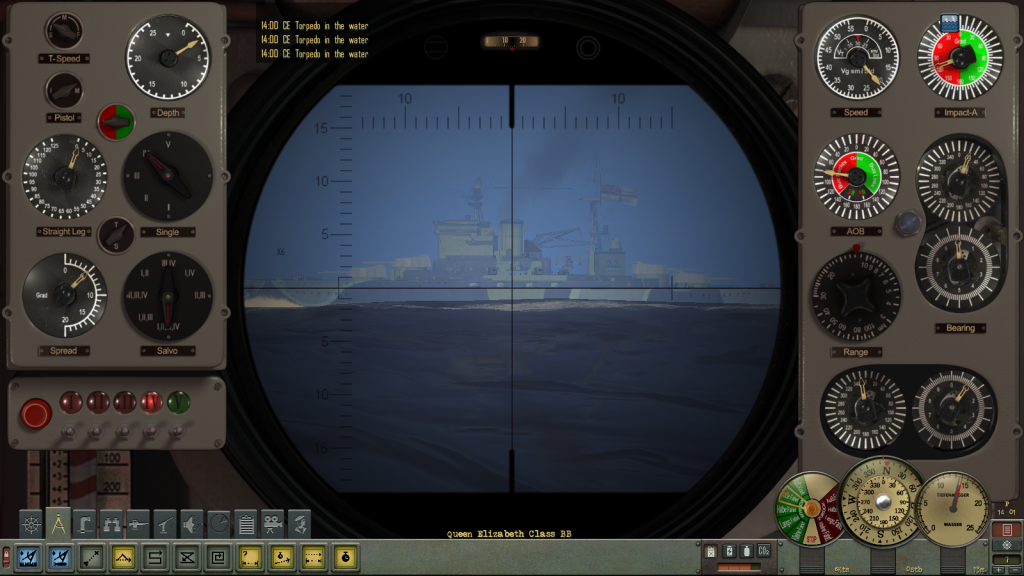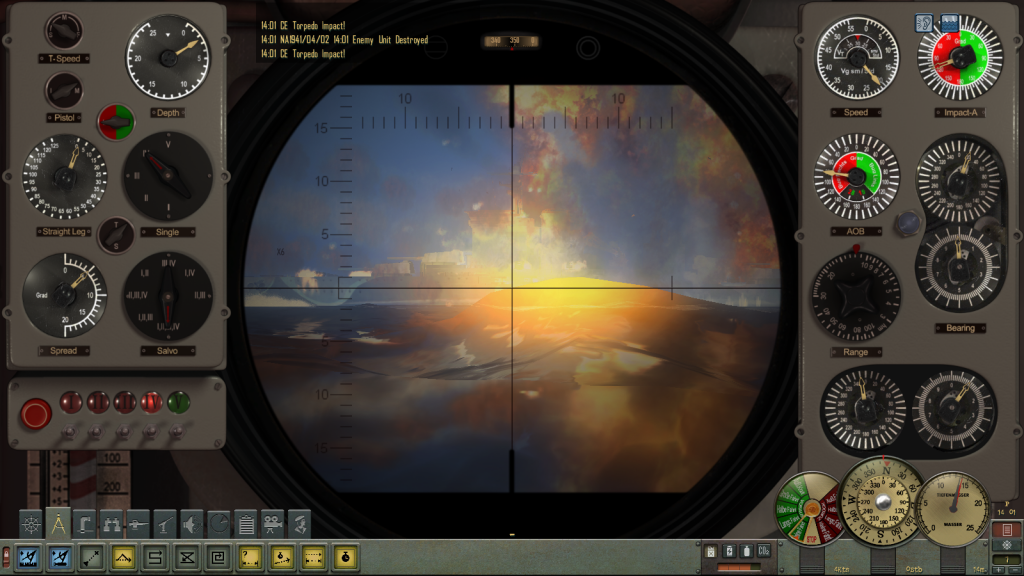U-47 was now based in St Nazaire, France. This allowed direct access to the Atlantic, shortening the route, and allowing us to remain on station somewhat longer. However, it also means we have to traverse the Bay of Biscay, which is heavily patrolled by Allied aircraft, and so far we have managed to spot them in time, but it will only take one moment of relaxed vigilance to end the war for us all.
War patrols six and seven were successful, with a number of merchants sunk, and we made several surfaced attacks on convoys. Doing so requires firing from longer range, but we can attempt to escape at high speed on the surface. It is risky, but if the shot can be taken without being spotted it is worth the risk as we aren't subjected to counterattack. I look for overlaps and fire all four bow tubes then get the hell out of there, usually firing off the stern tube as we come around. I will only attempt this in heavy seas, and thus far it has worked very well. But as we move in to late 1941 I will have to consider curtailing surface attacks as I expect the escorts might soon begin to be equipped with radar.
U-47s eighth war patrol left St Nazaire for the AL grid south of Iceland. After several weeks chasing convoy reports without success I made for our old hunting grounds west of Stornoway, as this is the route ships travelling to and from Loch Ewe tend to use. And sure enough, soon after arriving on station, the bridge watch spotted a destroyer standing out in to the Atlantic. Soon after I spotted the faint outline of a battleship and began the plot and ordered flank speed to get in position. A Kaleun needs to be quick and measured in such situations, as ships moving this fast will get by quickly, particularly so when they emerge out of fog, which drastically reduces the range at which they are first spotted. We clocked the force of one battleship and four screening destroyers at 21 knots and closed the track, attempting to get in ahead of the port side screen.

I use what I call a 'steady-wire' firing technique. That is, I plot the target's course and speed, and then attempt to predict the firing point and position. I then dial in the solution for this spot and place the periscope wire on that bearing. As the target crosses the wire, the torpedoes are fired, usually with specific features of the target used as aimpoints, such as leading mast, bridge, stack, after mast, etc. In the 3 attacks shown in this thread, I instead fire all torpedoes considering the size of the targets and the improbability of follow up attacks, and fire them at intervals to spread the eels along the target's length. As mentioned before, this sort of 'single-shot salvo' provides a failsafe against targeting errors. For example if I have the speed too slow, the first 3 should hit with the fourth missing astern, or too fast and the first will miss ahead but the remaining three should hit.
In this case I dialed in an AoB of 80 port, bearing 020, speed 21 knots and range 1200 meters. The AoB was a mistake, as I meant to put it at 70 port which would match the 020 firing bearing since U-47's heading was at a 90 degree angle to the target's course. This introduced a 10 degree AoB error that fortunately didn't come back to haunt me. In such conditions, and with the target moving so fast, there is little time for double checking, and the mistake was mine.
As the battleship, now identified as Queen Elizabeth class, 36000 tons, filled my scope and crossed the wire, all four bow torpedoes were fired, set to run fast, 44 knots, with impact pistols and depth of 2 meters. After a run of about 24 seconds, the torpedoes slammed in to the battleship and she exploded.

As soon as the torpedoes hit the escorts began pinging U-47, and I swung the scope to starboard to see the port screen coming on at zero angle with a bone in her teeth and I ordered crash dive to 160 meters as we performed a corkscrew evasion to hopefully throw off the aim of the charging destroyer. As we passed through 70 meters a string hit close, causing moderate damage and minor flooding that we were able to get under control, but at the expense of silent running. Using the hydrophones (I don't use external cameras), we attempted to evade by reacting to the course changes of the escorts, but this is a real challenge with four of them up there. Eventually we were able to slip off to the northeast and after being held down for three hours we managed to lose them and surfaced and got the hell out of there.
Later in the patrol, with just three fish left and low on fuel, we encountered a group of HMS Repulse (battlecruiser), HMS Argus (escort carrier) and two huge liners northbound in column making 20 or 21 knots in the CG grid off the northwest coast of Portugal. Initial sighting was at 12,000 meters, and the force already showed a fairly large angle. Our flank speed allowed us to close to 9,000 meters before I felt it prudent to dive, less the Repulse open broadsides on us. Able to get no closer than 7,000 meters, the remaining torpedoes were fired at the battlecruiser, but all appeared to miss ahead and we headed for the barn, arriving at St Nazaire after 2 months at sea.